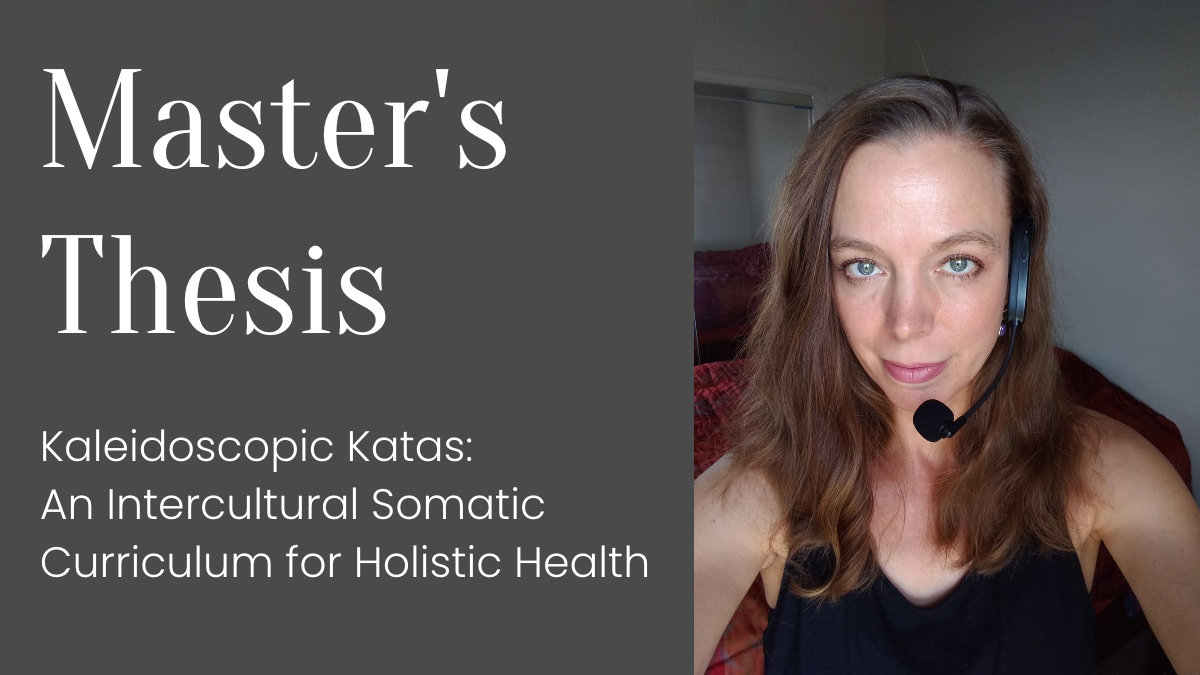Master’s Thesis – Kaleidoscopic Katas: An Intercultural Somatic Curriculum for Holistic Health
I am overjoyed to announce that my thesis has been approved by the University of Northern Colorado. I have been working towards my Master’s in Dance Education for the past two and a half years. Here is the link to the online publication:
Kaleidoscopic Katas: An Intercultural Somatic Curriculum for Holistic Health
I don’t expect that many people will read all ninety-nine pages of my thesis, but you may find parts of it interesting. Attempting to complete this rigorous program during COVID has been one of the most challenging things that I’ve ever done. I could not have accomplished this goal without the help of the people who I’ve listed on the Acknowledgements page.
The YouTube video is from the final class of the Zoom teaching research workshop.
Abstract
The intent of this research study was to combine three African and Eastern somatic movement practices into a modern dance curriculum. Few studies have investigated the therapeutic value of subtle body awareness in a dance class context. This integrative study combined psychological, physiological, and contemplative pedagogical approaches, which led to the development of a comprehensive five-part workshop with five adult participants. This ten-hour online class series involved learning a traditional Afro-Haitian serpent dance called the Yanvalou, the Tantric practice of Chakra Yoga, and the Five Animals qigong. The original curricular goal was to combine these three modalities into five sequential katas. Due to numerous COVID-related setbacks, the researcher modified the curriculum and examined the relationships within this trinity of movement forms. The following qualitative instruments were used in this multimethod research study: reflective journal entries, participant commentary, a post-study rubric, video documentation, and the researcher’s observations. Pre- and post-surveys were used for quantitative data collection and were cross-referenced for the purpose of identifying emergent themes. The combined result of this data provided evidence of holistic health enhancement, personal empowerment, and altered states of consciousness. This study advanced the somatic application of the Yanvalou by exploring its relationship to the chakras and qigong meditation techniques. It also informed the continued development of a contemplative curriculum that could be utilized by post-secondary institutions.

